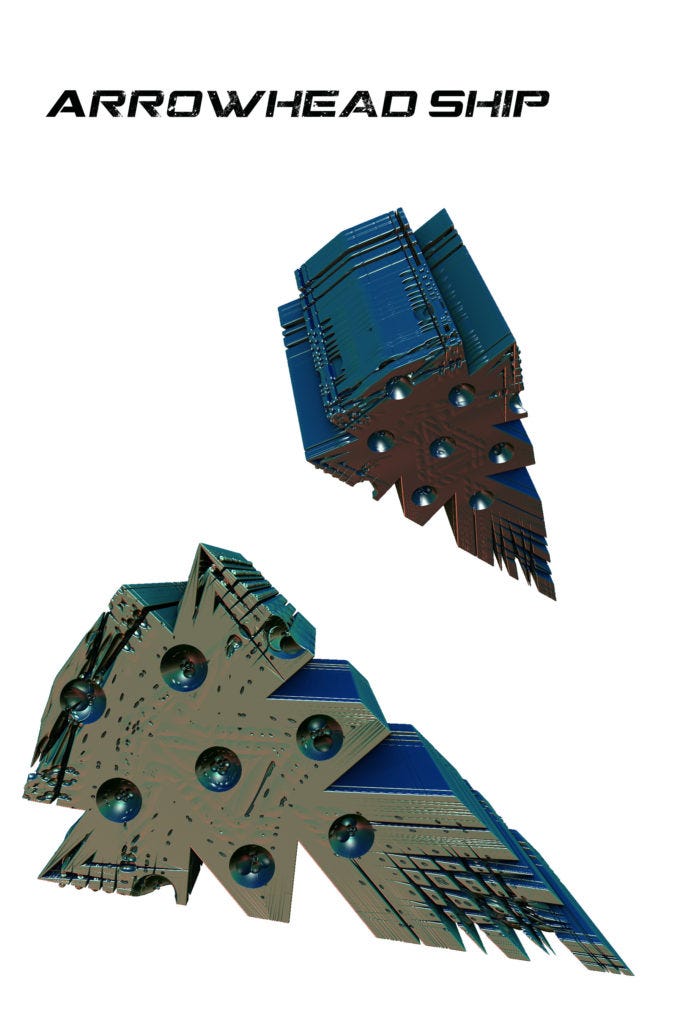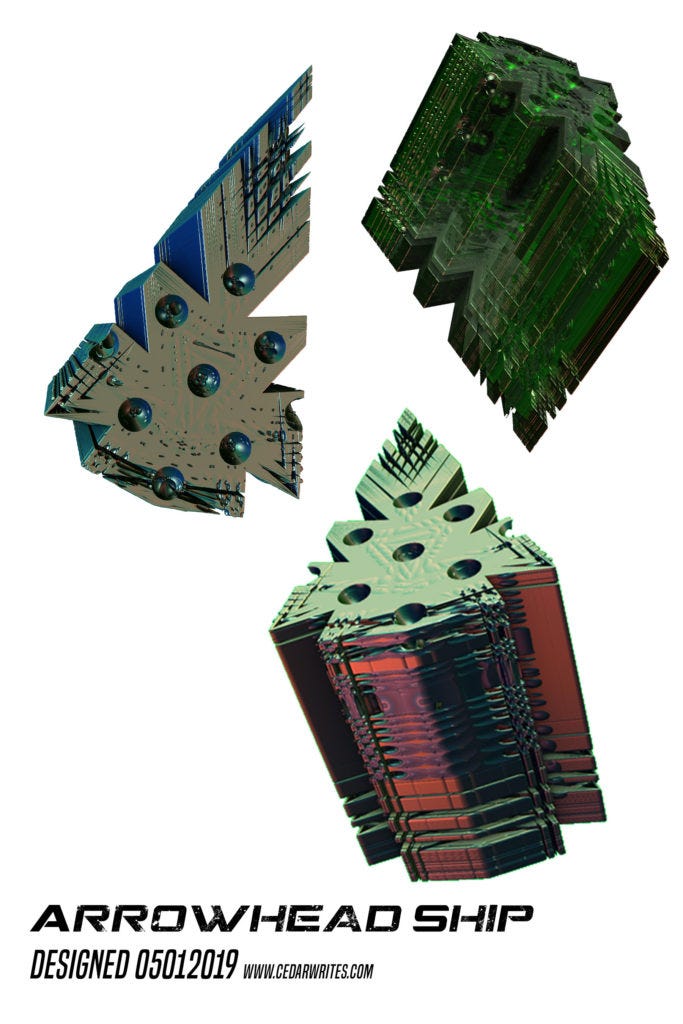Spaceship Design
So I've been experimenting with space art again. It's a lot of fun, which honestly is enough in and of itself. But when I start digging into rendering spaceships, it's not just for fun. When I create science fiction cover art, I want to use ships. The distant views of nebula or galaxy are amazing, but even adding planets for scale just throws the enormity of deep space into perspective. What I really need for the human touch are those emblems of our far-reaching hubris: space ships and space stations.
Not to mention that exploding space ships on book covers are like candy to readers.
However, the big problem I was having when I was reliant on stock art was that there are very few stock spaceships available, relatively speaking. It's not like beautiful women, who exist in multitudes right here on earth to be photographed easily enough. No, space ships have to be drafted, rendered on the computer, and there are artists who do it very well, but not nearly enough of them. Teaching myself how to create scenes of space, and planets, even adding rings to planets, simple enough. Spaceships? Whew.
Then I started seeing the stock ships I'd invested in to use on my covers, and client's covers, popping up all over the place. I try very hard to create original work for my cover art. The stock ships needed to be retired, and I needed to be able to create my own so that no-one else could have them. Which led to an interesting train of thought.
What did I want my ships to look like? Many space ships look like, well, a pilot got a wild hair and zipped up out of the atmosphere into space. Which is great for near-future SF, or SF where the Earth is the only hegemony. Not so much for space opera set well into the future, or aliens, or the ability space's unique challenges give us to loose the bounds of gravity and atmosphere and get really creative.

Creating a ship in Mandelbulb3D allows me to keep a little randomness while thinking about practicality.
I do want to keep practicality in mind, though. It's one thing to envision the kinds of airy, ethereal ships made possible by the lack of gravity. Like the space dock in the header image, that is simply s structure to hang off of while building a ship. You can have vast constructs out in space high above orbital range. They will still have inertia, though, if they are going to travel at all. Tethered to a solar sail? That might be negligible. Passing through some warped space gravity well to fold and mutilate the laws of physics and speed of light? That ship is going to have serious pressures on it. Not to mention that a ship or station is essentially a giant tin (insert metal of choice here. Or mother of pearl as I referenced earlier this week. Or, heck, while we're dreaming big, sheets of diamond and sapphire clear as glass) can full of air drifting through an inimicable wasteland fraught with radiation and micrometeorites.
All of this goes through my head when I start dreaming up spaceships. I might not do it from the blueprints out, but I have the advantage of being an artist. I want something that looks good, or practical, or real, or all of the above. At least until I blow it into pixelated smithereens on the screen.
Take this Arrowhead (yeah, yeah, real original naming convention, I was tired) ship for example. I like the wedge shape because it implies fast. I like the cracks and cornices that allow for more surface area that could be used for windows. Or weapons emplacements. Or... use your own imagination. I like the divots for engines. Or perhaps those are the emplacements for energy weapons. I'll have to play around with the base design for a while and see what I like. Unless I sell the concept to a client, in which case I'll let them pick.

Rotation to see all angles of the ship is a great way to add some realism to the artwork. If I bought stock, I'd have one angle. This could be used on multiple pieces to represent the same ship(class of ships, too).




